A guide to TRM best practices for travel managers.
Communication: The pulse of travel risk management.
By: Ray Rackham
February 28, 2024
This is the second in a series of five articles on Travel Risk Management (TRM) best practices. TRM in a post-COVID world has never been more crucial. As companies navigate the complexities of business travel in an era marked by uncertainties and evolving risks, understanding and implementing TRM best practices is essential. This blog series, based on a comprehensive study conducted with travel managers worldwide, sheds light on the most critical aspects of TRM. Our methodology involved analyzing survey data, industry standards like ISO 31030:2021, and insights from the Global Business Travel Association (GBTA), ensuring a robust and practical approach to understanding TRM in today’s workplace. Download the full report here.
In the intricate ecosystem of Travel Risk Management (TRM), communication is foundational—it's the lifeblood that keeps a TRM strategy alert and responsive. This article delves into the crucial function of communication in fostering a secure, informed, and responsive environment for business travelers.
Drawing from our extensive survey data, our analysis reveals that communication goes beyond mere information dissemination. It weaves an ecosystem of safety, readiness, and collective awareness, which is pivotal in the TRM framework.
Best practices in communication
The study identified three areas in which travel and mobility managers should focus to ensure world-class communication practice.
1. Advanced automated mass communication systems
Employing sophisticated technology for mass communication, as practised by 74% of the organizations surveyed, ensures the timely and widespread transmission of critical information, crucial during unforeseen emergencies.
2. Well-defined protocols for robust stakeholder communication
Establishing clear channels and protocols, as we observed in 71% of firms, is indispensable for facilitating seamless internal communication among stakeholders, ensuring coherence, coordination, and collective action during crises.
3. Comprehensive pre-trip risk briefings and training
Equipping travelers with in-depth briefings, a strategy followed by 69% of organizations, empowers them with the necessary knowledge and tools to navigate and manage potential risks effectively, a practice strongly echoed in the 'TRM in a Post-COVID World' study.
Conclusion
In the wide and varied landscape of TRM, communication extends beyond dialogue; it is about forging a responsive, informed network, ready to act and react in the face of uncertainties. It's about ensuring the safety, readiness, and collective preparedness of every traveler under the organization's wing.
Travel well-informed with CIBTvisas
An experienced visa specialist can help you navigate the complexities of border crossing requirements. Contact CIBTvisas for a quote today.
CIBTvisas Monthly Update
Get the CIBTvisas Monthly Update for the most recent information on travel requirements and consular closings.
